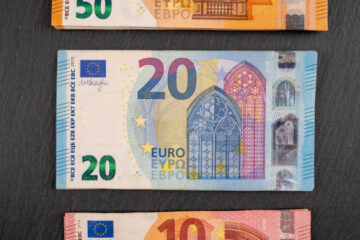If you spend enough time trading, you’ll encounter chart gaps. This is a brief article about what they are and how to trade them.
A $100 stock reports subpar earnings — almost immediately, shares fall 10% in after hours trading. The stock doesn’t recover by the open of the next day. Instead, they open at $90: they gapped down. This happens all the time, and a common theme in charting is the idea that stocks have a propensity for filling these gaps. In this case, filling the gap would be the stock trading back up from $90 through $100 during regular market hours.
So one more time: what is a gap? A gap is a difference in price between two periods of time, where trading did not occur between the two prices.
Real-Life Examples of Gaps in Apple’s Chart
Here are a few examples of some recent gap-ups and gap-downs in Apple (AAPL) – Get Apple Inc. Report.
Red arrows denote gap-downs, green arrows denote gap-ups.
This chart (which uses daily candles during regular hours) makes the gaps pretty obvious. If we were looking at a chart over the same time period that used a line rather than candlesticks, it wouldn’t be so obvious. Candlestick charts offer more data at a glance, and if you aren’t used to using them, it’s never a bad time to start. But that’s a topic for another day!
Notice that these gaps are annotated beginning at the wick or shadow of the candle, and not the close or open — because the shadow indicates a period where trading occurred, it’s important to include them in the calculation of both where the gap is, and where the gap is filled.
Real-Life Examples of Gap Fills in Apple’s Chart
Using the same Apple chart from above, let’s annotate where those gaps were filled.
Can Gaps go Unfilled?
Yes. And furthermore, there’s nothing that says gaps in a chart must be filled immediately. Sometimes they can take years to fill. However, it’s worth noting that roughly 9 out of 10 gaps get filled eventually. Rather than thinking of this trading method as a hard and fast rule, you should think of gaps in a chart like magnets. They can be resisted, but they provide an added “pull” to a stock’s price action. Not to mention, with the large number of traders watching for the completion of these patterns, it can become somewhat of a self-fulfilling prophecy (like many themes in technical analysis). Regardless of why these gaps often get filled, it’s worth adding this simple charting concept to your trading arsenal.
Ready to start trading? Try Unusual Option Activity Essential. Learn how you can follow the “smart money” with a fresh UOA trade idea each week – including technical levels so that you know where to enter and exit!


